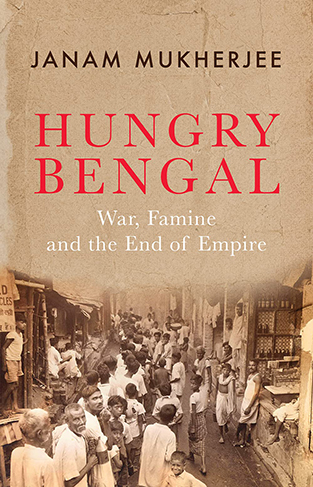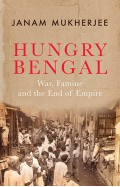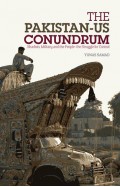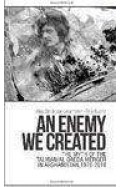- Home
- Books
- Categories
- Non Fiction
- Education and Reference
- Hungry Bengal: War, Famine and the End of Empire
Hungry Bengal: War, Famine and the End of Empire
By: Janam Mukherjee
-
Rs 6,115.50
- Rs 6,795.00
- 10%
You save Rs 679.50.
Due to constant currency fluctuation, prices are subject to change with or without notice.
The years leading up to the independence and accompanying partition of India mark a tumultuous period in the history of Bengal. Representing both a major front in the Indian struggle against colonial rule, as well as a crucial Allied outpost in the British/American war against Japan, Bengal stood at the crossroads of complex and contentious structural forces - both domestic and international - which, taken together, defined an era of political uncertainty, social turmoil and collective violence. While for the British the overarching priority was to save the empire from imminent collapse at any cost, for the majority of the Indian population the 1940s were years of acute scarcity, violent dislocation and enduring calamity. In particular there are three major crises that shaped the social, economic and political context of pre-partition Bengal: the Second World War, the Bengal famine of 1943, and the Calcutta riots of 1946. Hungry Bengal examines these intricately interconnected events, foregrounding the political economy of war and famine in order to analyse the complex nexus of hunger, war and civil violence in colonial Bengal at the twilight of British rule.
The years leading up to the independence and accompanying partition of India mark a tumultuous period in the history of Bengal. Representing both a major front in the Indian struggle against colonial rule, as well as a crucial Allied outpost in the British/American war against Japan, Bengal stood at the crossroads of complex and contentious structural forces - both domestic and international - which, taken together, defined an era of political uncertainty, social turmoil and collective violence. While for the British the overarching priority was to save the empire from imminent collapse at any cost, for the majority of the Indian population the 1940s were years of acute scarcity, violent dislocation and enduring calamity. In particular there are three major crises that shaped the social, economic and political context of pre-partition Bengal: the Second World War, the Bengal famine of 1943, and the Calcutta riots of 1946. Hungry Bengal examines these intricately interconnected events, foregrounding the political economy of war and famine in order to analyse the complex nexus of hunger, war and civil violence in colonial Bengal at the twilight of British rule.
Hungry Bengal: War, Famine and the End of Empire
By: Janam Mukherjee
Rs 6,115.50 Rs 6,795.00 Ex Tax :Rs 6,115.50
Zubin Mehta: A Musical Journey (An Authorized Biography)
By: VOID - Bakhtiar K. Dadabhoy
Rs 892.50 Rs 1,050.00 Ex Tax :Rs 892.50
The Origins of Political Order From Prehuman Times to the French RevolutioN
By: Francis Fukuyama
Rs 4,045.50 Rs 4,495.00 Ex Tax :Rs 4,045.50
Manning Up: How the Rise of Women Has Turned Men into Boys
By: Kay Hymowitz
Rs 845.75 Rs 995.00 Ex Tax :Rs 845.75
The Obama Syndrome: Surrender At Home War Abroad
By: Tariq Ali
Rs 1,100.75 Rs 1,295.00 Ex Tax :Rs 1,100.75
The Quest For Meaning: Developing A Philosophy Of Pluralism
By: Tariq Ramadan
Rs 1,185.75 Rs 1,395.00 Ex Tax :Rs 1,185.75
The Pakistan US Conundrum Jihadists The Military And The People The Struggle For Control
By: Yunas Samad
Rs 1,185.75 Rs 1,395.00 Ex Tax :Rs 1,185.75
An Enemy We Created: The Myth Of The Taliban Al Qaeda Merger In Afghanistan 19702010
By: Alex Strick van Linschoten
Rs 4,197.50 Rs 8,395.00 Ex Tax :Rs 4,197.50
WikiLeaks: Inside Julian Assanges War on Secrecy
By: David Leigh & Luke Harding
Rs 637.50 Rs 850.00 Ex Tax :Rs 637.50
No similar books from this author available at the moment.
Inside Graduate Admissions - Merit, Diversity, and Faculty Gatekeeping
By: Julie R. Posselt
Rs 7,375.50 Rs 8,195.00 Ex Tax :Rs 7,375.50
Zubin Mehta: A Musical Journey (An Authorized Biography)
By: VOID - Bakhtiar K. Dadabhoy
Rs 892.50 Rs 1,050.00 Ex Tax :Rs 892.50
Hungry Bengal: War, Famine and the End of Empire
By: Janam Mukherjee
Rs 6,115.50 Rs 6,795.00 Ex Tax :Rs 6,115.50














-120x187.jpg?q6)





-120x187.jpg?q6)



-120x187.jpg?q6)






